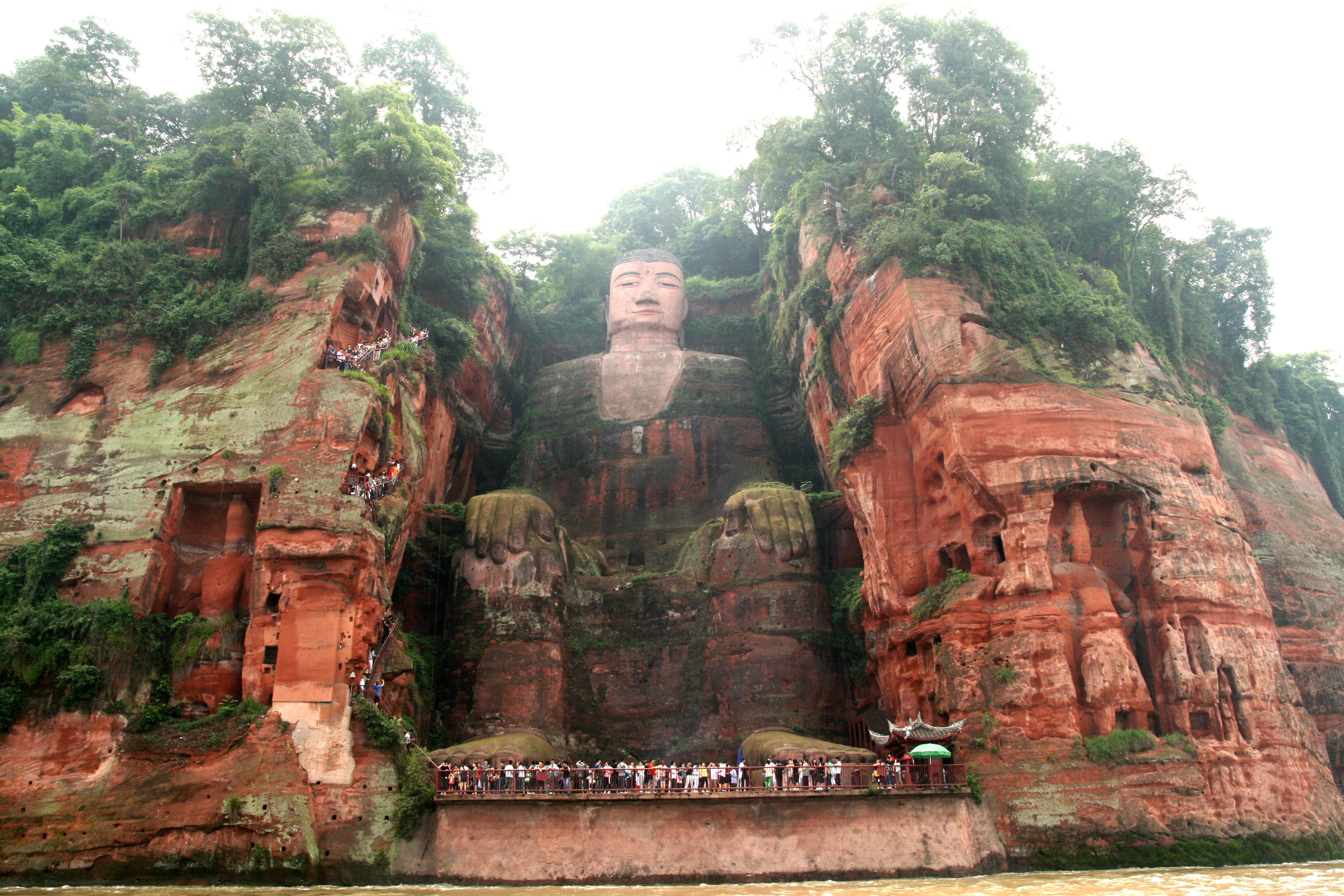Leshan Giant Buddha
The Giant Buddha of Leshan (Chinese乐山 大佛/乐山 大佛, Pinyin Leshan DAFO ) is the world's largest statue of Buddha made of stone. It was during the Tang Dynasty ( 618-907 ) out of a rock at the confluence of the rivers Min Jiang, Dadu and Qingyi rivers near the city of Leshan, in the southern part of Sichuan province in China, carved. The statue faces the Mount Emei Shan, one of the four sacred Buddhist mountains, while the rivers flowing at her feet.
Since 1982, the Buddha stands on the list of monuments of the People's Republic of China. He was taken along with the Emei Shan in the list of UNESCO World Heritage in 1996.
History and Significance
Construction has started 713 under the leadership of the Chinese monk Haitong. This hoped thereby to calm the troubled waters, which affected the navigation on the river. When he looked at risk to finance the project, he is said to have been torn as a sign of his piety and sincerity his eyes. His students completed the work 90 years later. Apparently this led to huge construction company that has huge amounts of stone were removed from the rock and deposited in the river, which changed its course and made him safe for passing ships.
The statue represents Maitreya, who is in Buddhism as the Buddha of the future and big coming World Teacher. Characteristic of Buddhist art in the countries of Northern Buddhism (Tibet, Korea, China, Japan) Maitreya is in a sitting position ( Sanskrit: Bhadrasana, " happiness seat " ) is shown. His hands resting on the knees.
Dimensions
The statue is 71 meters high, 28 meters wide at the shoulders and on his little toenail is a person easily accommodate. From the river, saw the surrounding mountain range to resemble a sleeping Buddha, where the Buddha statue is located at the position of the heart. This has led, among other things to the local idiom: " The mountain is a Buddha and the Buddha is a mountain. "
Gallery
Head of the Buddha
View of the Buddha from below









.jpg)